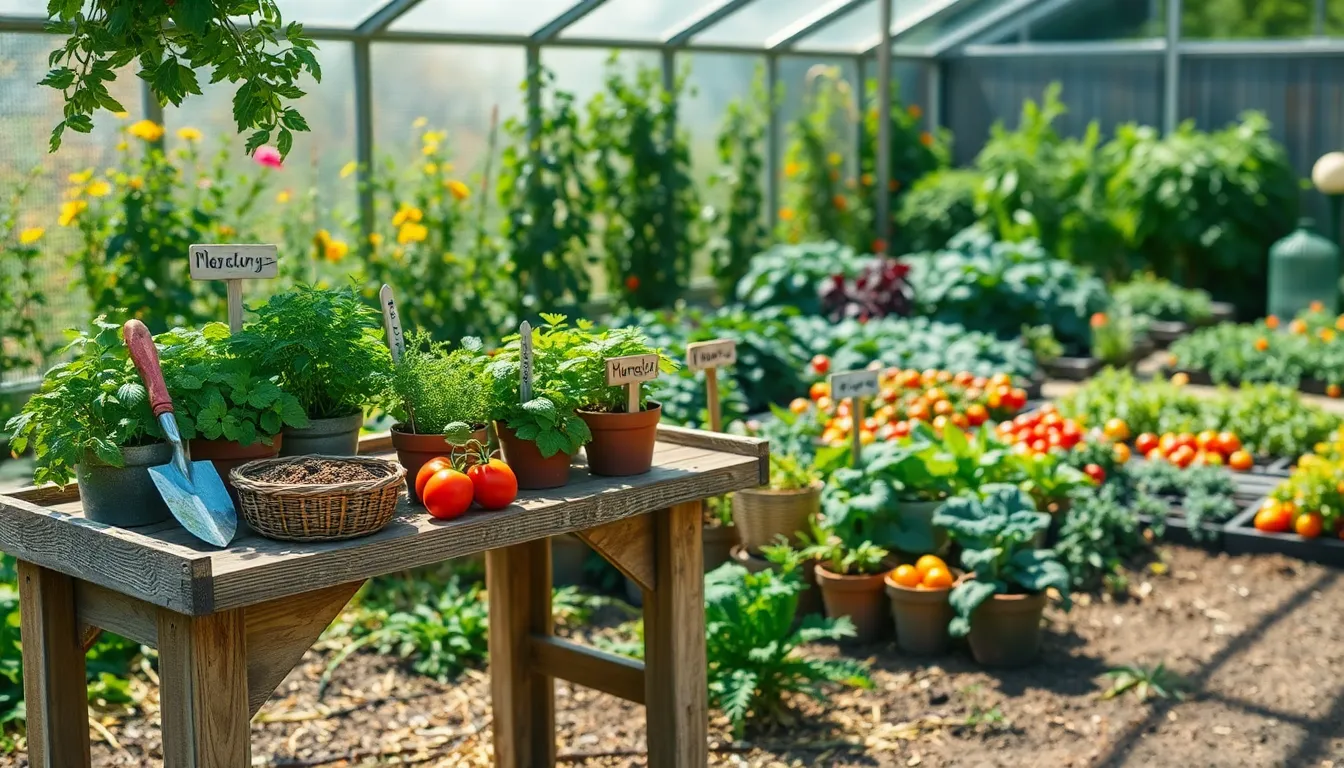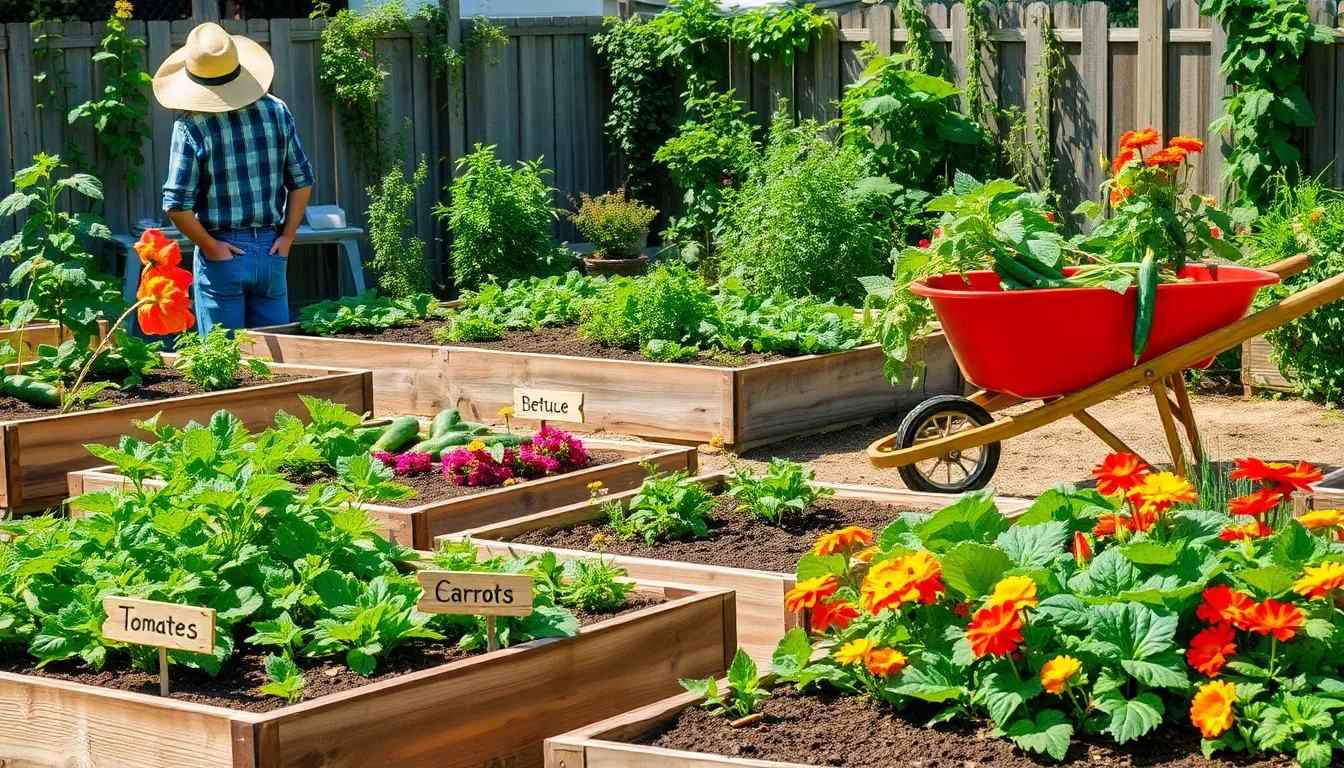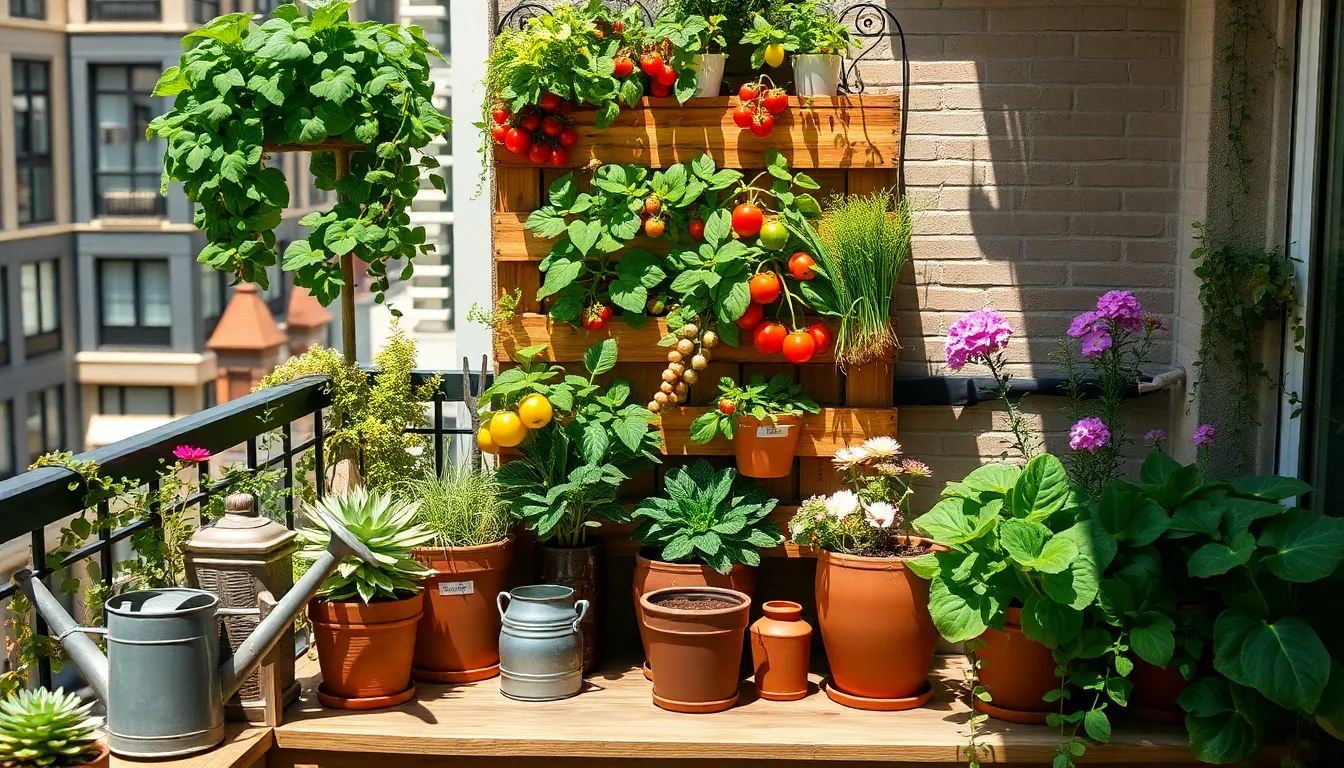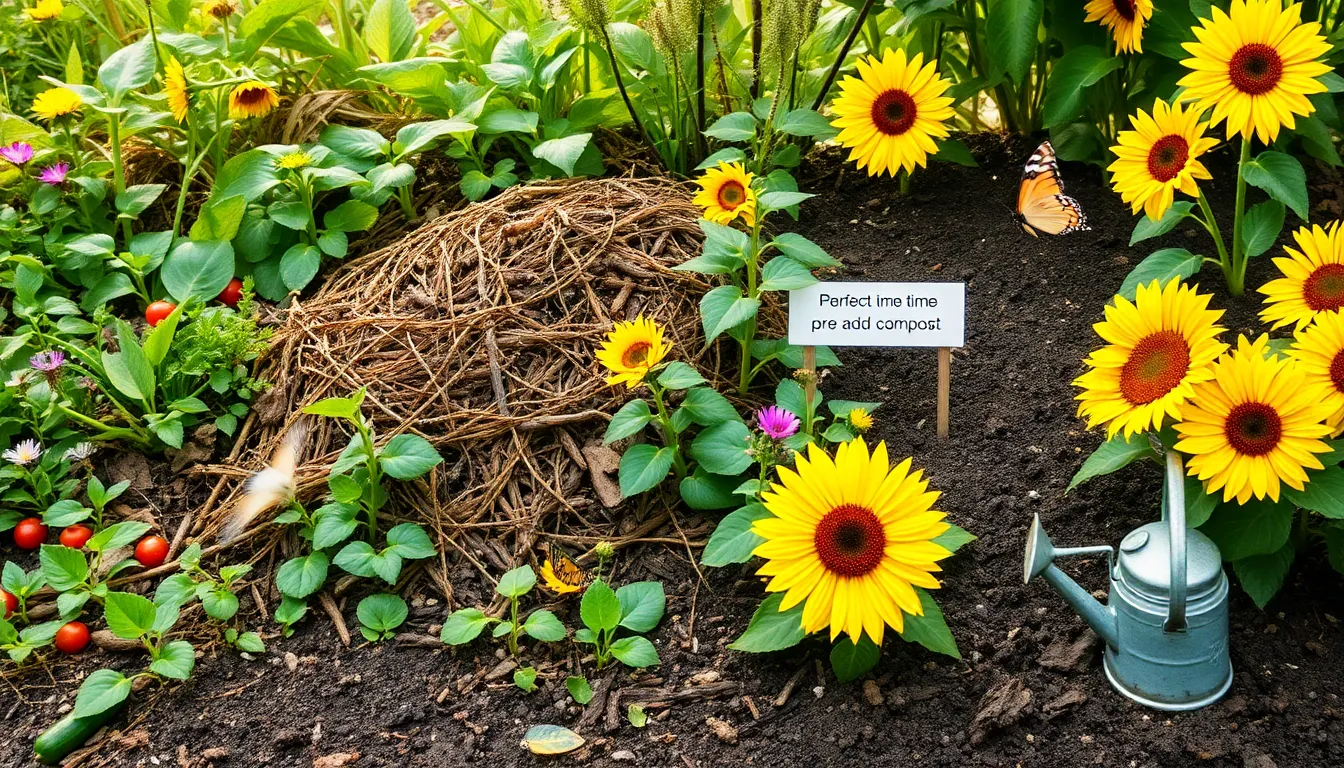Welcome to the world of organic gardening, where the earth’s natural rhythms guide our green thumbs and every seed holds the promise of life. Whether you’re just planting your first seedling or you’ve spent decades nurturing lush landscapes, “14 Budget-Friendly Organic Gardening Tips” will enrich your journey with affordable, sustainable practices that honor both your wallet and the planet.
In this guide, we’ve compiled practical, down-to-earth strategies that transform your garden into a thriving oasis without breaking the bank. You’ll discover how these techniques not only enhance your gardening prowess but also cultivate a deeper connection with nature, offering a sense of accomplishment and joy with every new bloom.
Imagine the satisfaction of harvesting fresh, chemical-free produce or watching pollinators dance among vibrant flowers—all achieved through simple, cost-effective methods. With these tips, you’ll feel empowered to create a flourishing garden that rewards your efforts and inspires confidence, proving that a bountiful, organic garden is within everyone’s reach.
Compost Kitchen Scraps Efficiently
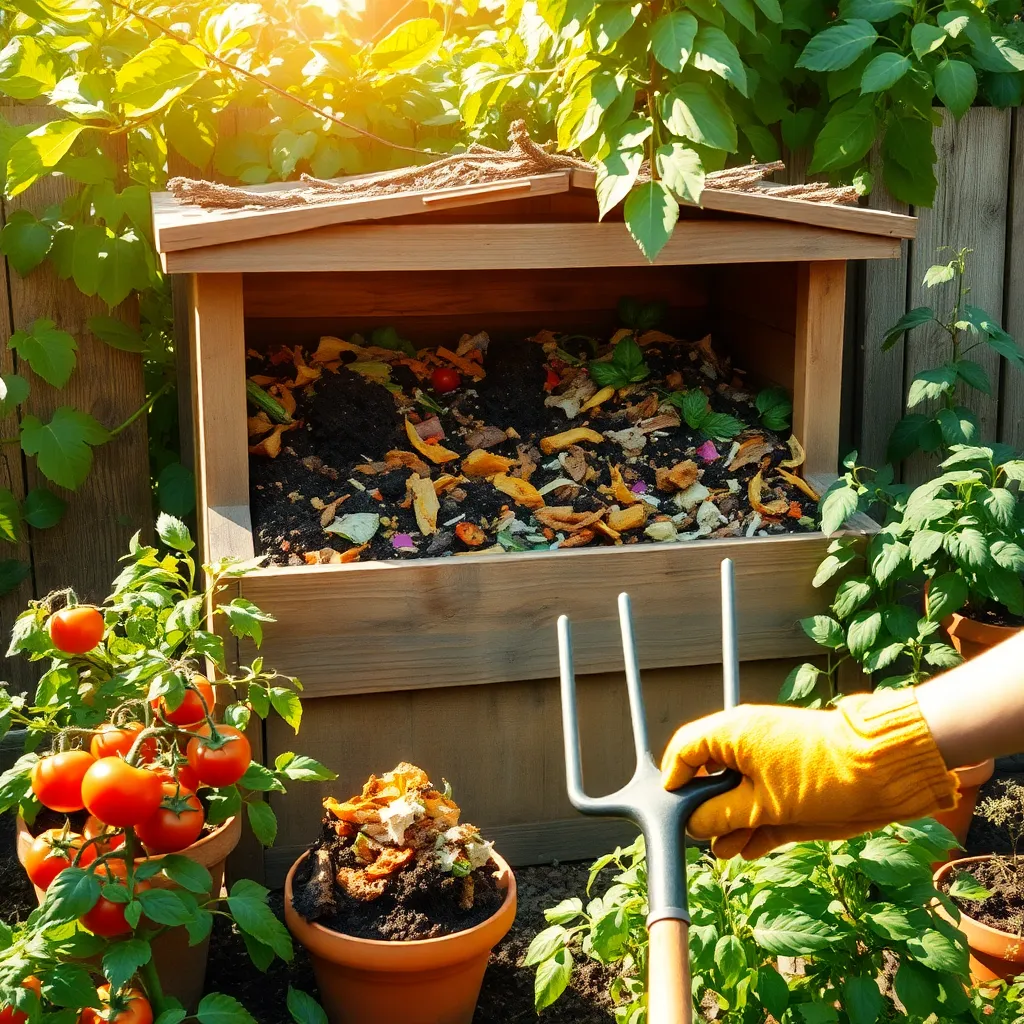
Composting kitchen scraps is a fantastic way to enrich your garden soil while reducing waste. Begin by collecting fruit and vegetable peels, coffee grounds, and eggshells in a small container in your kitchen.
For an efficient composting process, ensure you balance green materials like kitchen scraps with brown materials such as dried leaves or newspaper. This blend helps create the right conditions for decomposition by balancing nitrogen and carbon ratios.
To set up your compost, choose a well-draining spot in your garden and make sure the pile is easily accessible. Aerate the compost regularly by turning it with a pitchfork or compost aerator every week to speed up the breakdown process and prevent odors.
Advanced gardeners might want to use a compost tumbler, which simplifies the turning process and can produce compost more quickly. Whether you use a pile or a tumbler, keep the compost moist but not soggy, aiming for the feel of a damp sponge.
Collect Rainwater for Irrigation
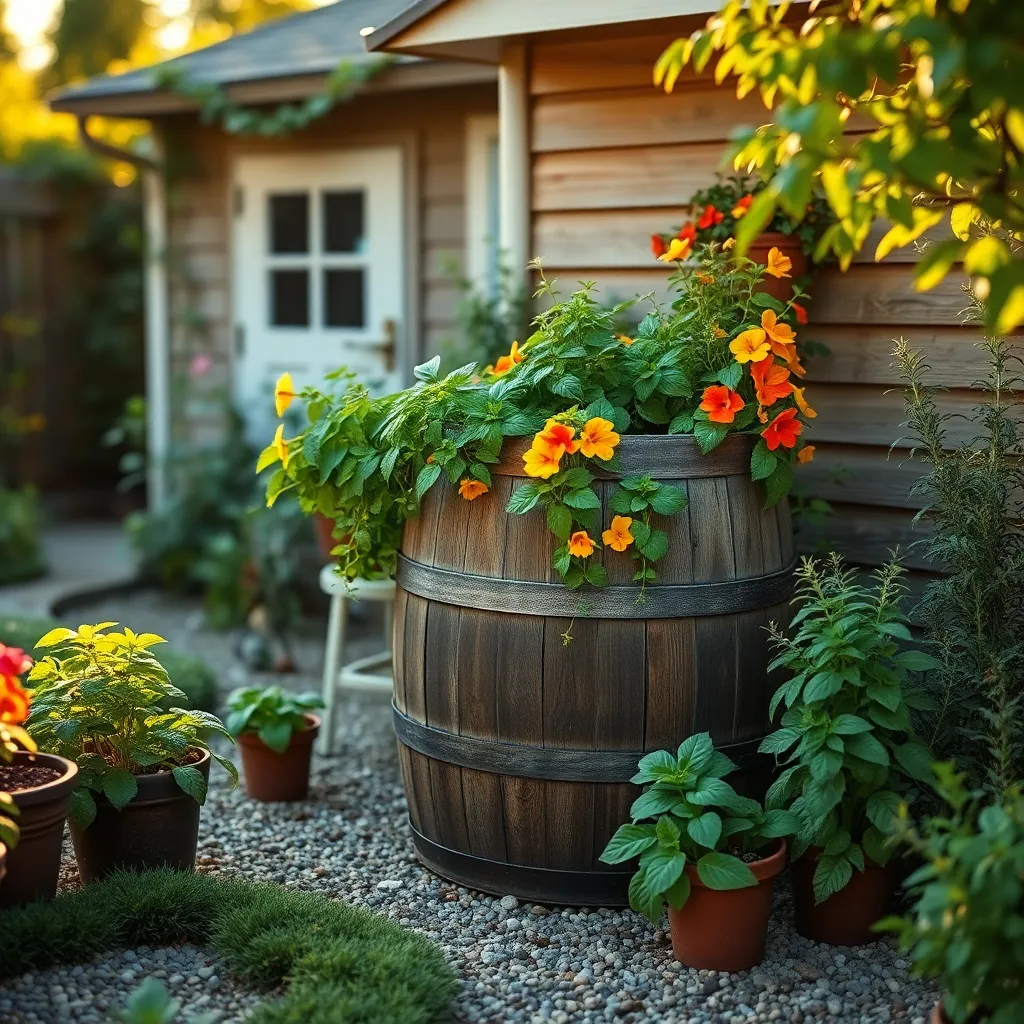
To effectively collect rainwater for irrigation, start by setting up a simple rain barrel system. Place the barrel under a downspout to capture runoff from your roof, ensuring it has a secure lid to prevent debris and insects from entering.
Using rainwater for your garden is not only environmentally friendly but also beneficial, as it is free of chlorine and other chemicals found in tap water. Ensure your rain barrel has an overflow outlet to redirect excess water away from your home’s foundation.
For those with larger gardens, consider connecting multiple barrels with a linking kit to increase your water storage capacity. It’s important to regularly check and clean your collection and distribution system to maintain efficient water flow and prevent clogs.
When using rainwater, apply it directly to the base of your plants in the early morning or late afternoon to minimize evaporation. This practice can be particularly beneficial for water-intensive crops like tomatoes and cucumbers, as well as for maintaining soil moisture during dry spells.
Plant Companion Vegetables Together
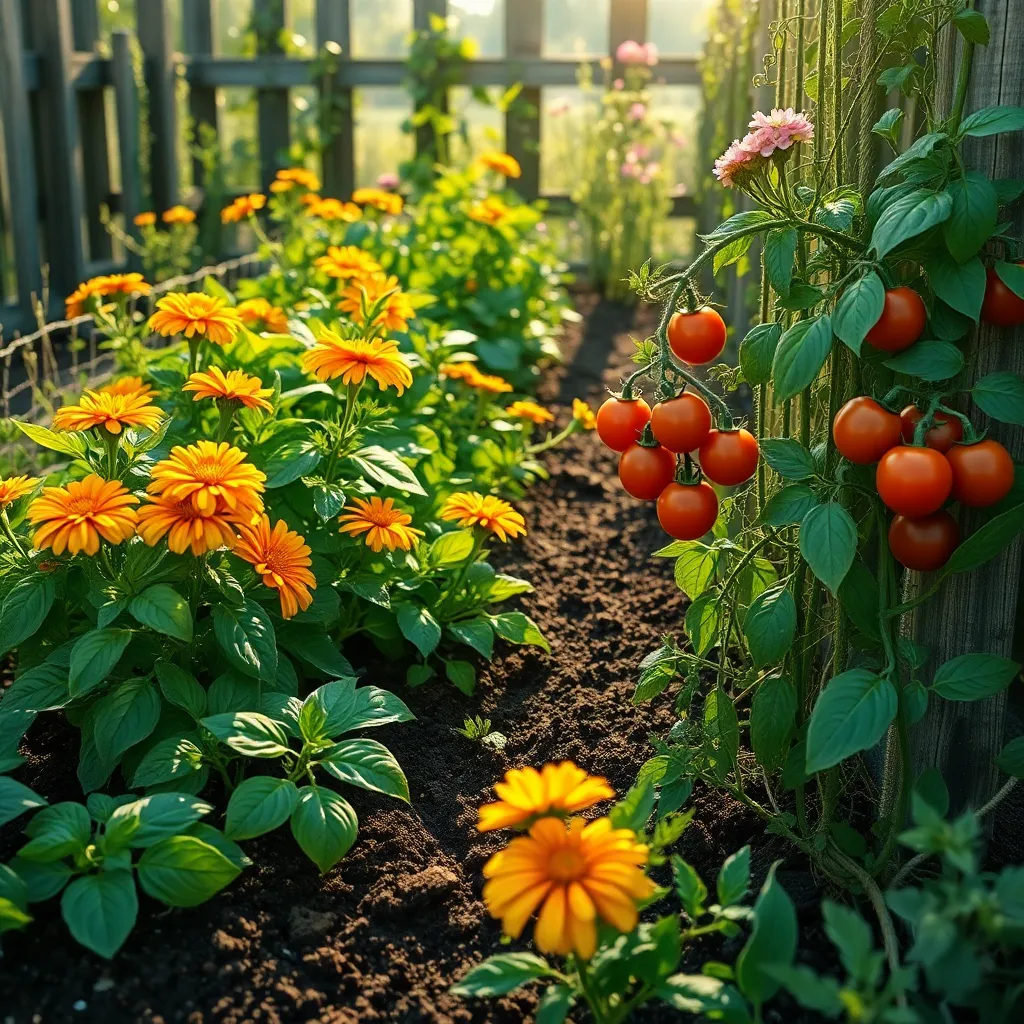
Companion planting is a strategic gardening technique that involves growing certain plants together for mutual benefits. For instance, pairing tomatoes with basil not only enhances flavor but also helps deter pests, making it a wise choice for organic gardeners.
Consider planting carrots and onions side by side to naturally repel carrot flies and onion flies. This combination is particularly effective as the scent of each plant confuses the pests, reducing the need for chemical interventions.
Another excellent duo is beans and corn, where beans fix nitrogen in the soil, benefiting the corn, while corn provides support for the climbing bean plants. This ancient partnership is a staple in sustainable gardening, ensuring healthy growth and increased yields.
Maximize space and productivity by planting lettuce under taller plants like tomatoes or peppers. The shade provided by the taller plants keeps the lettuce cool, prolonging its growing season and preventing bolting in hot weather.
Use Homemade Pest Repellents
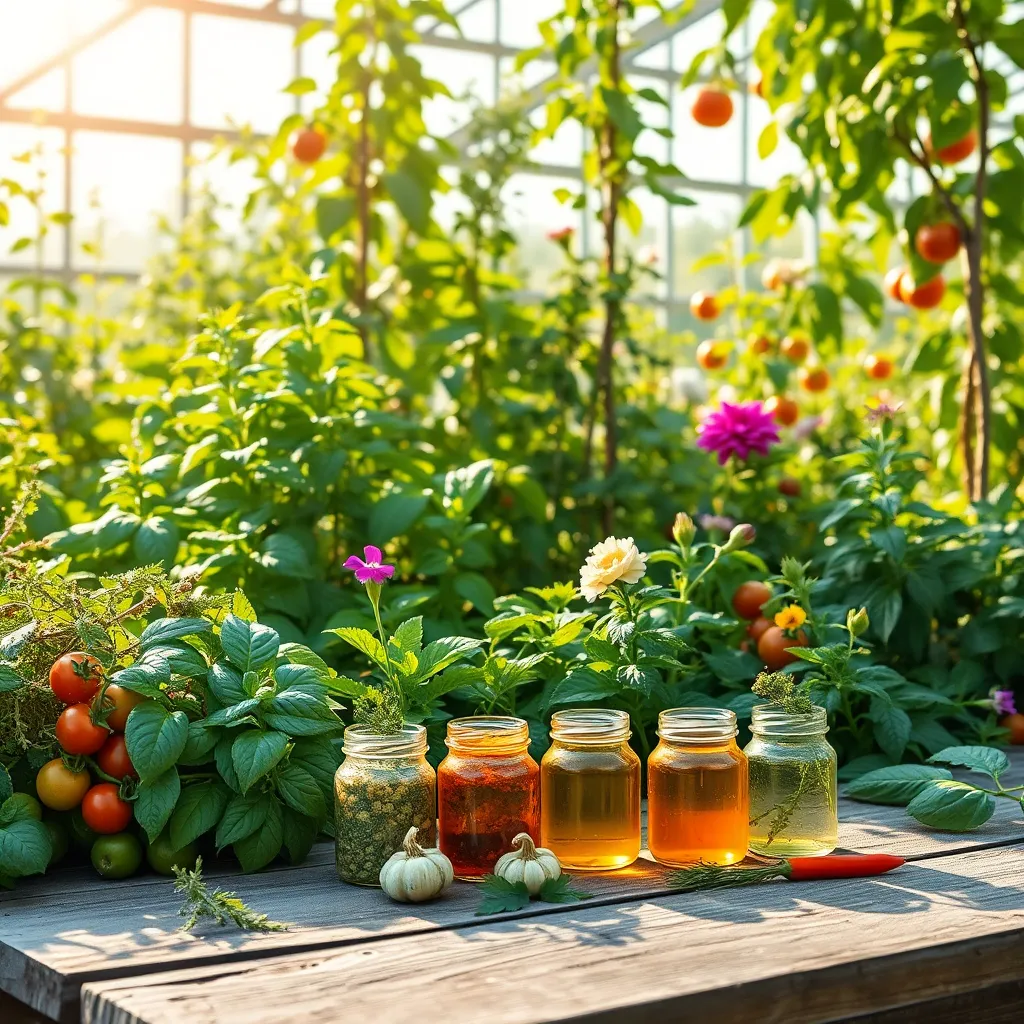
Homemade pest repellents offer a cost-effective and environmentally friendly way to protect your garden. Simple ingredients like garlic, neem oil, and dish soap can deter common pests without harming beneficial insects.
To create a garlic spray, blend two bulbs of garlic with a quart of water and let it steep overnight. After straining, add a few drops of dish soap and dilute the mixture with a gallon of water before applying it to your plants.
Neem oil is another potent option that targets a wide range of pests while being safe for most plants. Mix one tablespoon of neem oil with a quart of water and a few drops of liquid soap, then spray it evenly over affected areas every 7-14 days.
For those dealing with specific pest issues, consider making a hot pepper spray by blending spicy peppers with water and a drop of dish detergent. This mixture can be effective at repelling mammals and insects that dislike spicy substances.
Start Seeds in Recycled Containers
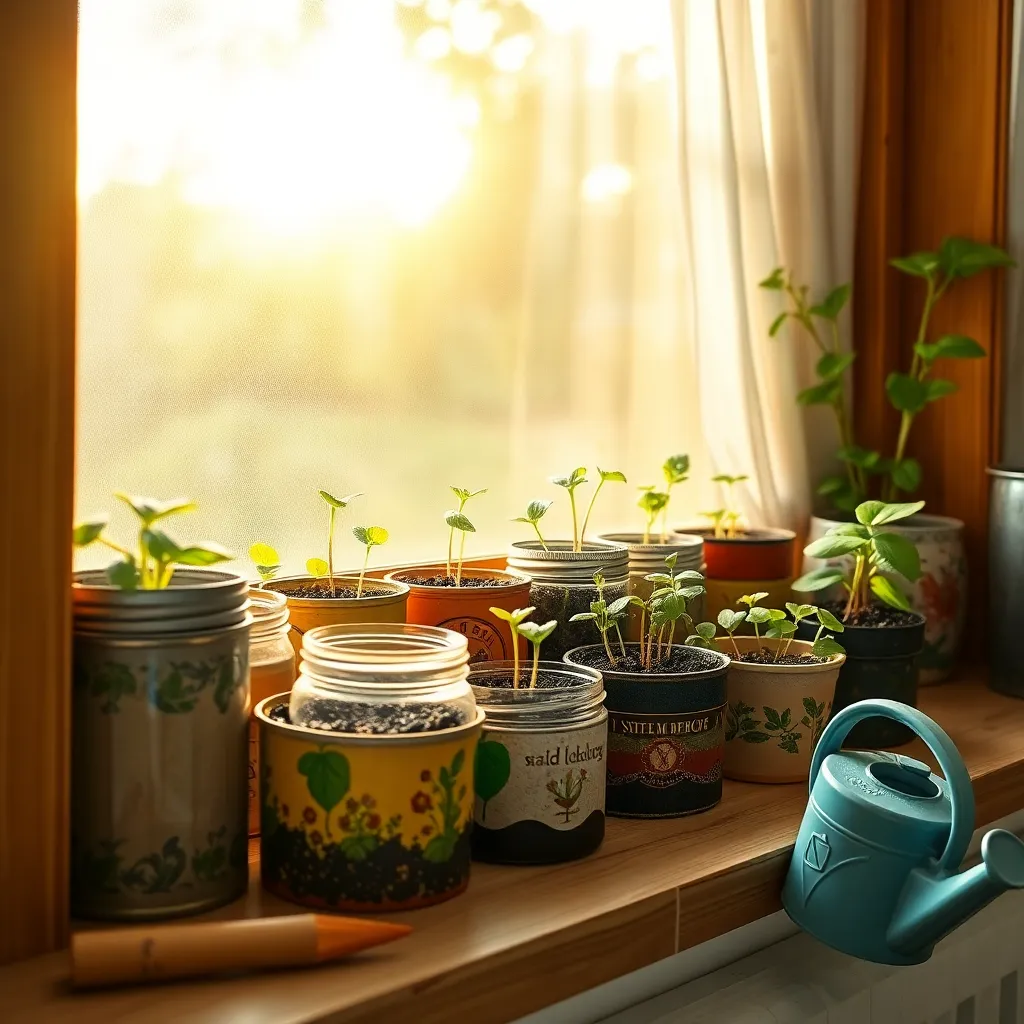
Starting seeds in recycled containers is a fantastic way to reduce waste and save money while nurturing your garden. You can use a variety of items such as egg cartons, yogurt cups, or even toilet paper rolls, which provide a perfect environment for germination.
Before planting, ensure that each container has adequate drainage holes to prevent waterlogging, which can harm seedlings. Fill the containers with a light, nutrient-rich soil mix, ideally one that contains a combination of peat moss, vermiculite, and perlite, to encourage healthy root development.
Label each container with the seed type and planting date to keep track of your seedlings’ progress. Position the containers in a warm, sunny location, such as a south-facing windowsill, to provide the necessary light and warmth for seed germination.
Water the seedlings gently to avoid disturbing the soil, ensuring it remains consistently moist but not soggy. As the seedlings grow, thin them out to prevent overcrowding, allowing the strongest plants to thrive.
Create Mulch from Grass Clippings
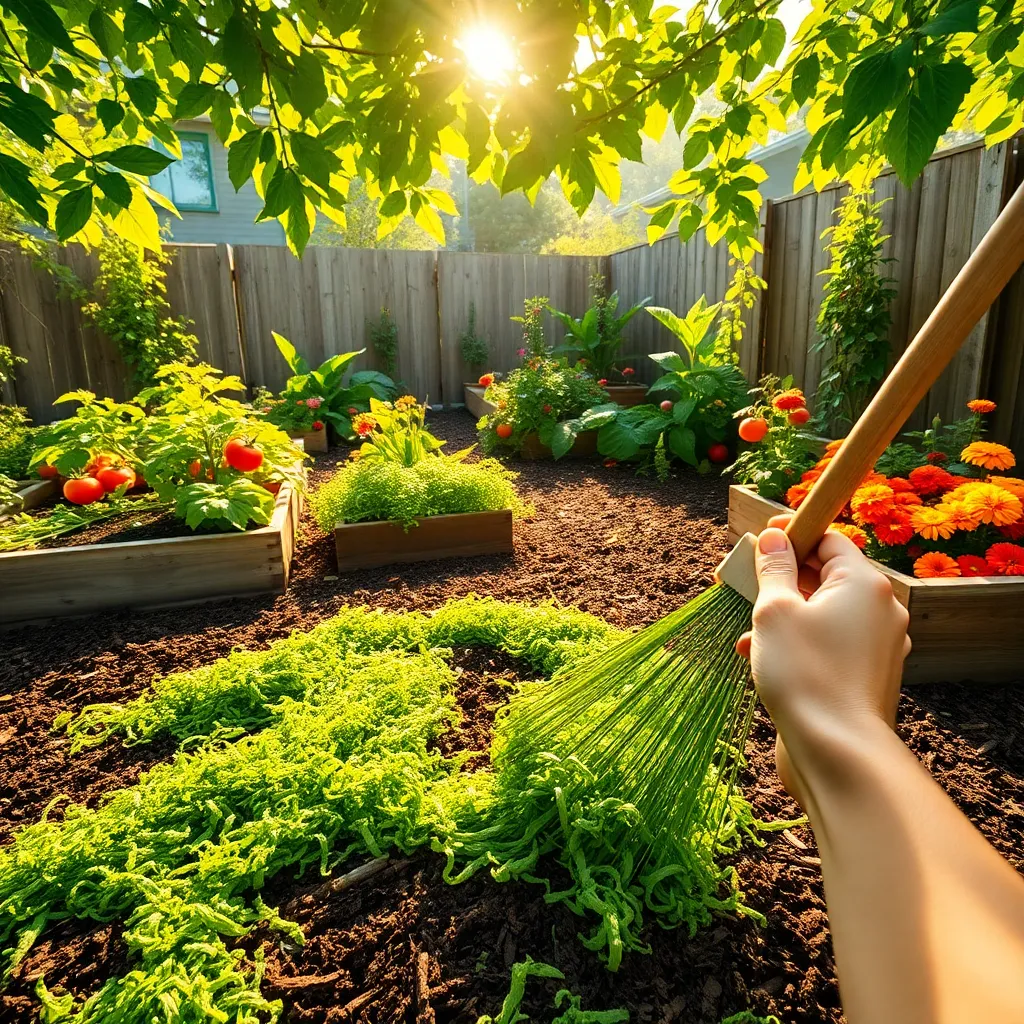
Transforming grass clippings into mulch is an excellent way to enrich your garden soil without spending extra money. Grass clippings are rich in nitrogen, which is a crucial nutrient for plant growth.
To use grass clippings as mulch, spread a thin layer around your plants, ensuring that you leave some space around the stems. This helps prevent moisture build-up that can lead to rot or attract pests.
It’s essential to use only dry clippings; wet grass can clump and create a slimy layer that obstructs air and water flow. Allow the clippings to dry out in the sun for a day or two before applying them as mulch.
For those seeking advanced tips, consider mixing the grass clippings with other organic materials like shredded leaves or straw. This combination can create a balanced mulch that provides a variety of nutrients and improves soil structure over time.
Repurpose Household Items for Trellises
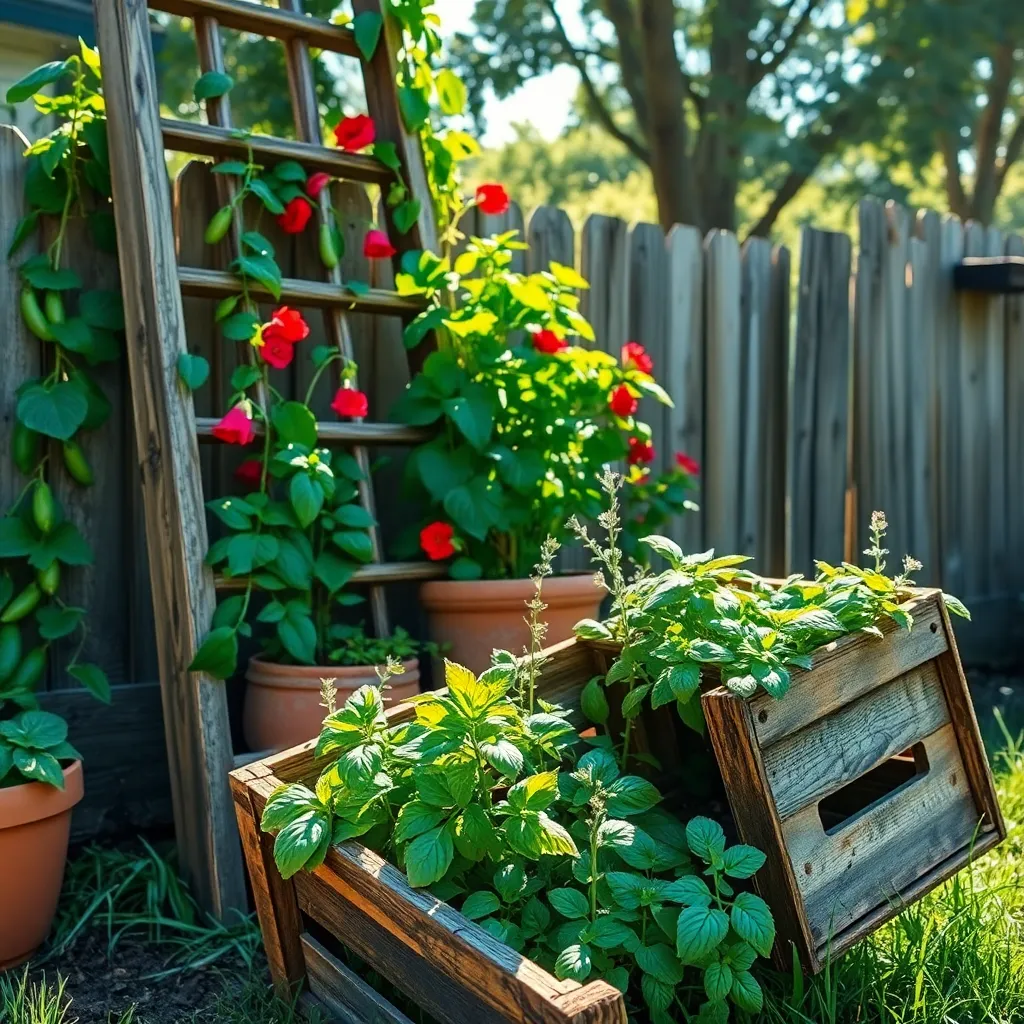
Using household items as trellises is a creative way to support your climbing plants while keeping costs low. You can repurpose items like old ladders, bed frames, or even large picture frames to provide the necessary structure for your plants to thrive.
Begin by selecting sturdy items that can withstand the weight and growth of climbing plants such as tomatoes, peas, or cucumbers. It’s important to ensure that the materials are weather-resistant or treated, as outdoor conditions can be harsh.
Arrange your repurposed trellis in an area with adequate sunlight, as most climbing plants require at least six hours of direct sunlight daily. Secure the base of your structure firmly into the soil to prevent it from toppling over during strong winds or heavy rains.
For a more decorative touch, consider painting your trellis with non-toxic, plant-safe paints to match your garden’s aesthetic. As the plants grow, gently guide their tendrils onto the trellis to promote even coverage and optimal growth.
Practice Crop Rotation Annually
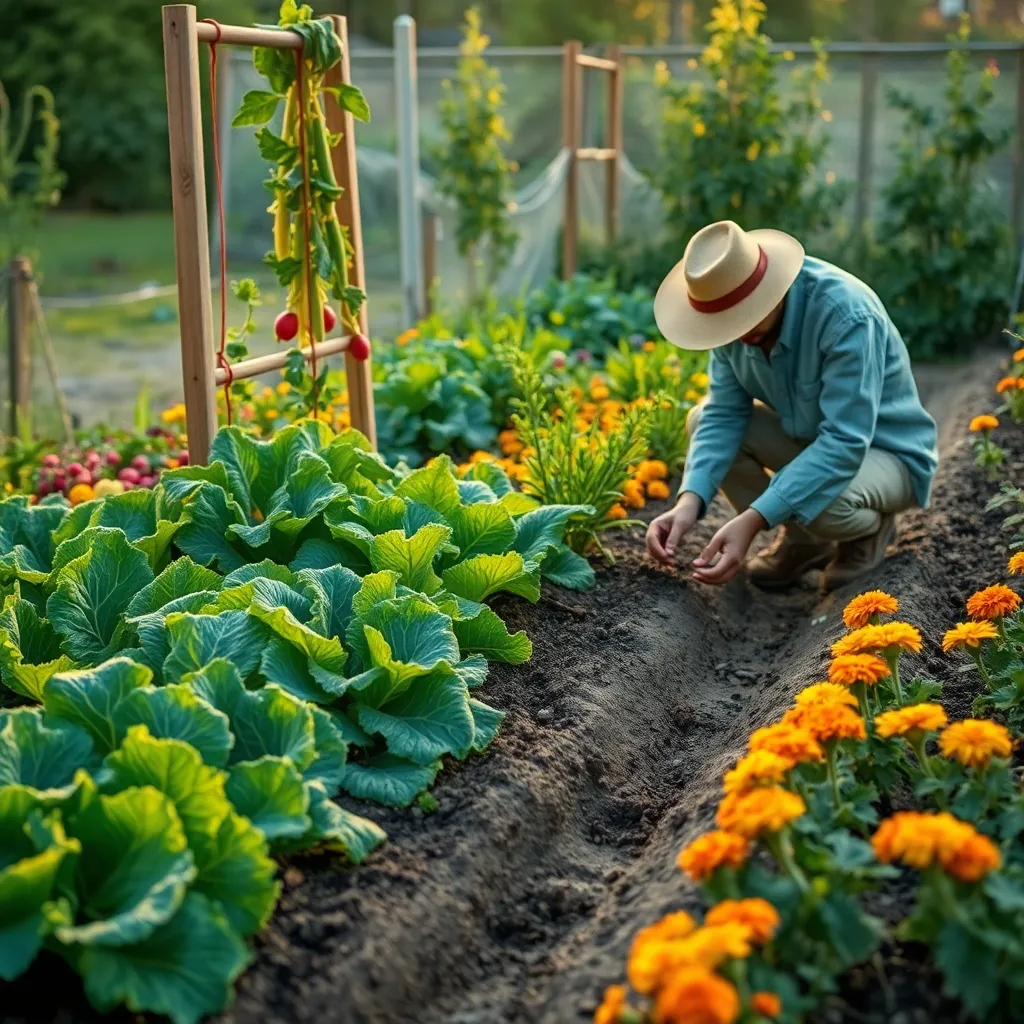
Practicing crop rotation annually is a cornerstone of sustainable gardening, helping to prevent soil depletion and reduce pest buildup. By rotating crops, you can disrupt pest life cycles and enhance soil fertility naturally, minimizing the need for chemical inputs.
Begin by categorizing your plants into families, such as Solanaceae (tomatoes, peppers) or Fabaceae (beans, peas), and rotating them to different garden sections each year. This practice prevents the same soil-borne diseases from attacking crops in the same family.
To implement crop rotation effectively, divide your garden into sections and plan a three- or four-year rotation cycle. For example, after growing nitrogen-fixing legumes in a section, follow up with heavy feeders like corn to take advantage of the enriched soil.
Advanced gardeners can incorporate cover crops, such as clover or vetch, into their rotation plans to further enhance soil structure and nutrient content. These cover crops can be tilled back into the soil, providing organic matter and helping to suppress weeds naturally.
Make Natural Fertilizer with Manure
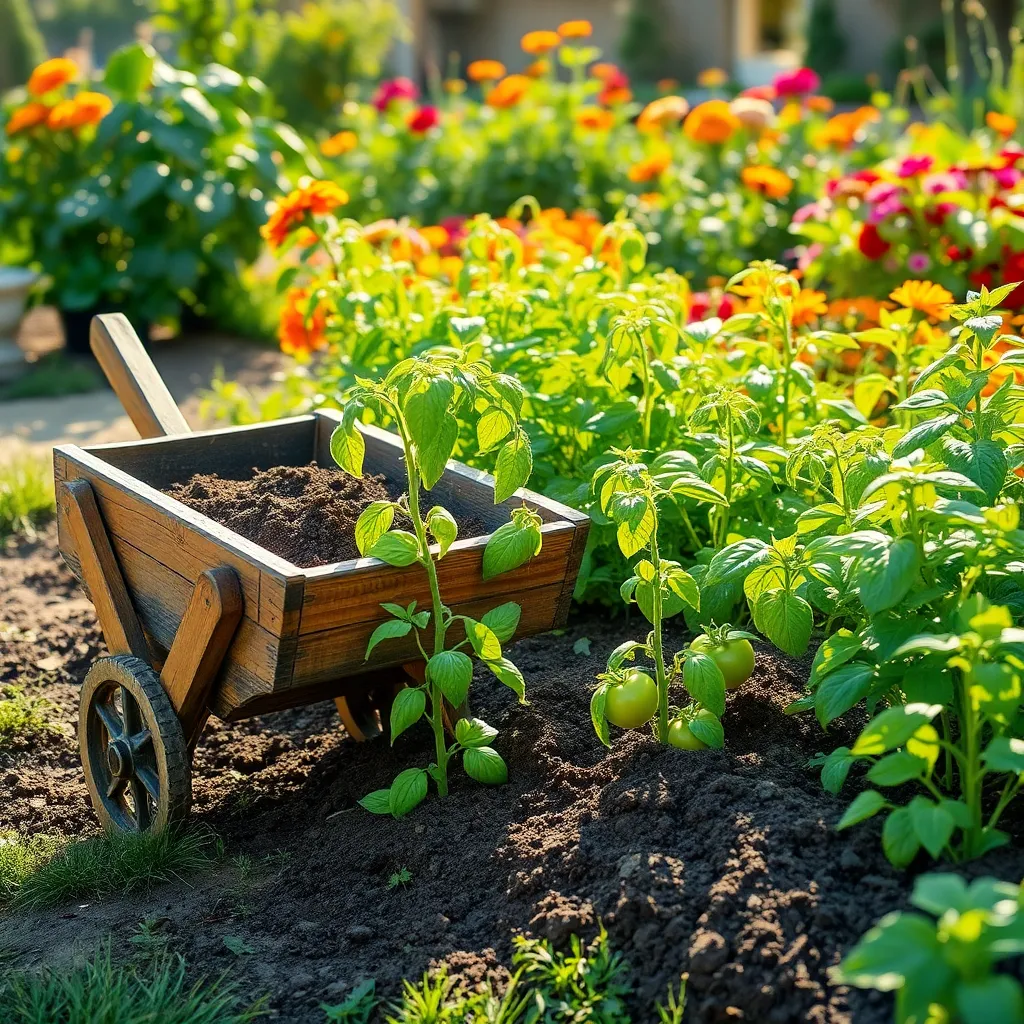
Turning manure into a natural fertilizer is both cost-effective and beneficial for your garden. Begin by choosing the right type of manure; cow, horse, and chicken manure are popular options due to their high nutrient content.
Collect manure and allow it to age, as fresh manure can be too strong and may harm plants. To age manure, simply pile it up and let it decompose over a period of several months, turning it occasionally to speed up the process.
Once properly aged, incorporate the manure into your garden soil to improve its fertility and structure. Spread a layer of aged manure, about 2 to 3 inches thick, over your garden beds and mix it into the top 6 to 8 inches of soil.
For those looking to further enrich their garden soil, consider creating a manure tea by soaking aged manure in water. Simply place a shovelful of manure in a burlap sack, submerge it in a 5-gallon bucket of water, and let it steep for a few days, stirring occasionally.
Grow Herbs Indoors from Cuttings
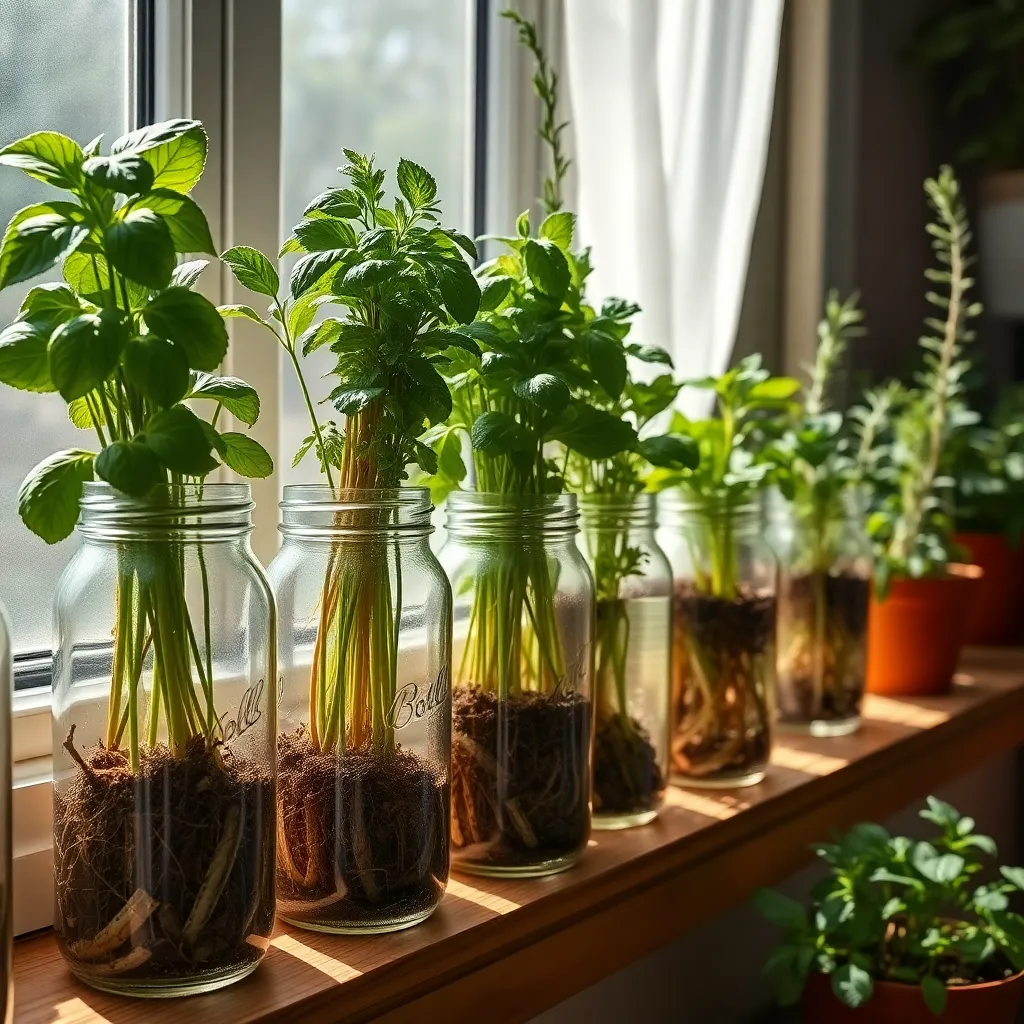
Growing herbs indoors from cuttings is an excellent way to start your own herb garden without spending much. Begin by selecting healthy, non-flowering stems from herbs like basil, mint, or rosemary, as these are particularly easy to propagate.
Once you have your cuttings, remove the lower leaves and place the stems in a glass of water. Ensure the water is changed every few days to prevent bacterial growth and promote root development.
When roots are about an inch long, transfer the cuttings into small pots filled with well-draining potting soil. Keep the soil consistently moist but not waterlogged, and position the pots in a sunny spot, such as a south-facing windowsill.
For more advanced gardeners, consider using a rooting hormone to accelerate root growth, especially for woody herbs like rosemary. Additionally, maintaining a consistent room temperature of 65-75°F (18-24°C) will help ensure healthy growth for your indoor herb garden.
Utilize Eggshells to Enrich Soil
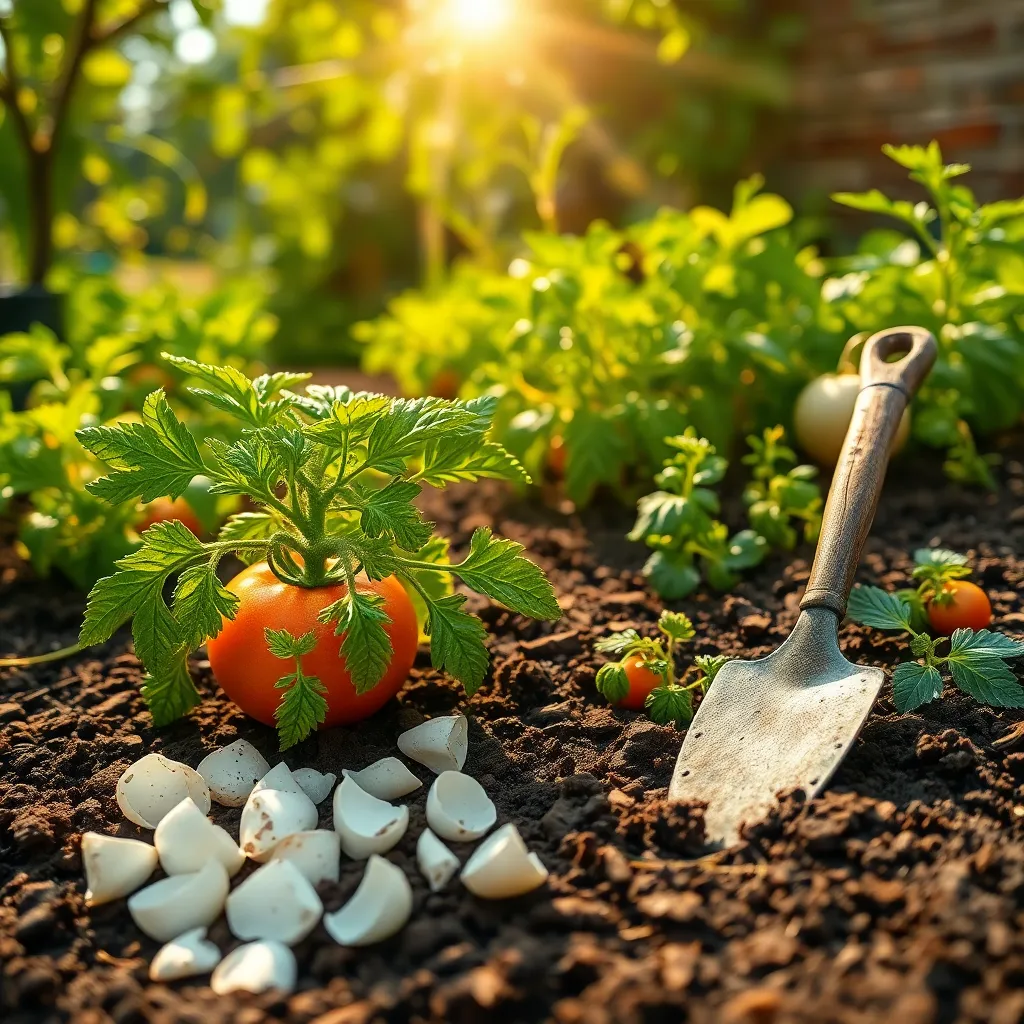
One of the simplest ways to enrich your garden soil is by utilizing eggshells, a natural source of calcium. When you crush eggshells and incorporate them into your soil, they gradually break down, providing important nutrients that help your plants thrive.
Eggshells are especially beneficial for plants that require extra calcium, such as tomatoes, peppers, and eggplants, which can suffer from blossom end rot if they lack this nutrient. To prepare eggshells for your garden, rinse them thoroughly, allow them to dry, and then crush them into small pieces before adding them to the soil.
For an added boost, consider grinding the dried eggshells into a fine powder using a blender or food processor. This increases the surface area and allows the calcium to be released more quickly into the soil, making it readily available for plant uptake.
It’s not only the calcium that makes eggshells valuable; they also help improve soil drainage and aeration. By adding crushed eggshells to your compost pile, you can enhance the nutrient content of your compost, ensuring a richer, more fertile mixture for your plants.
Attract Beneficial Insects Naturally
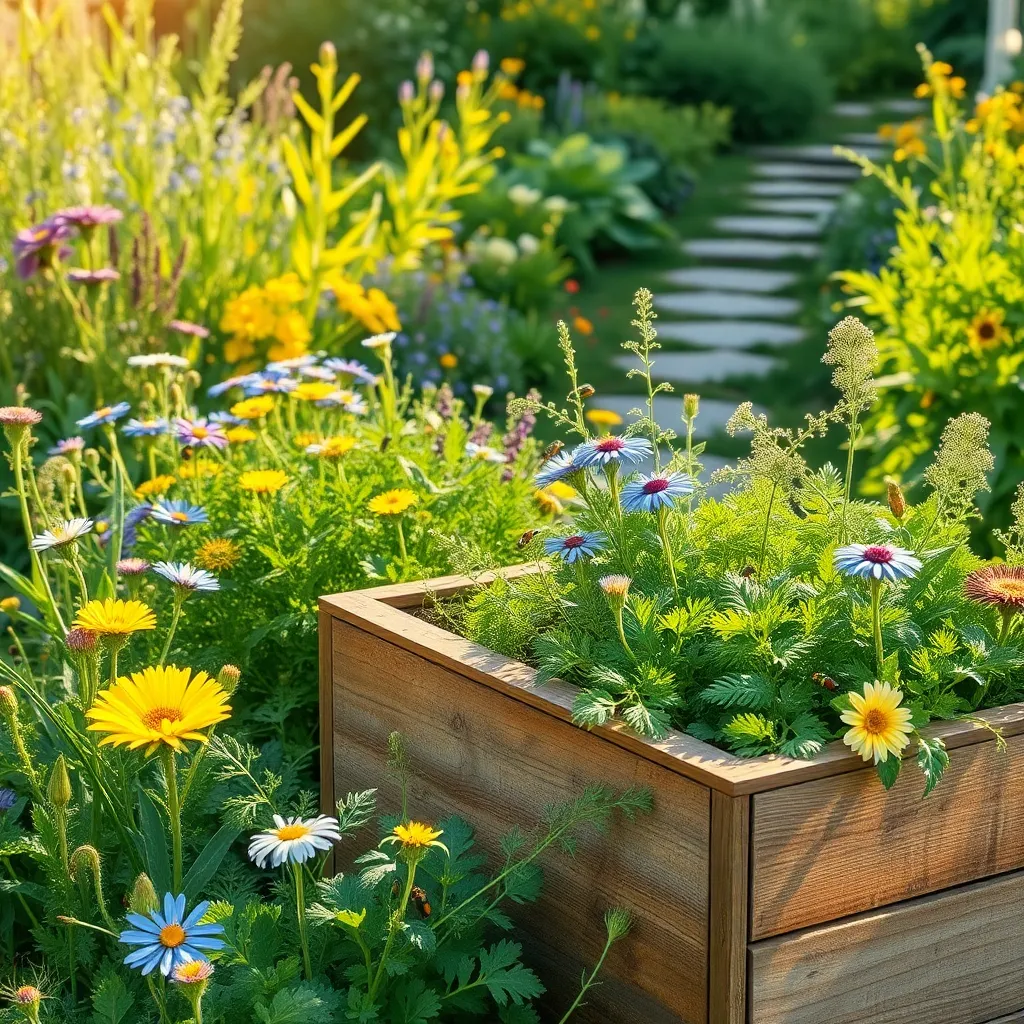
Attracting beneficial insects to your garden can significantly enhance plant health and productivity. Start by planting a variety of flowers such as marigolds, sunflowers, and calendula, which act as magnets for pollinators like bees and butterflies.
Diverse plantings will also invite predatory insects like ladybugs and lacewings, which help control pest populations naturally. Consider including plants like dill and fennel that provide nectar and pollen, catering to these beneficial predators.
Another effective method is to create a welcoming habitat by incorporating elements such as small rocks or a shallow dish of water. These features provide shelter and hydration, encouraging insects to stay and thrive in your garden environment.
For those looking to take it a step further, consider allowing a small portion of your garden to grow wild. This untamed area can serve as a haven for insects, offering diverse shelter and food sources, which in turn supports your entire garden ecosystem.
Build Raised Beds with Salvaged Wood
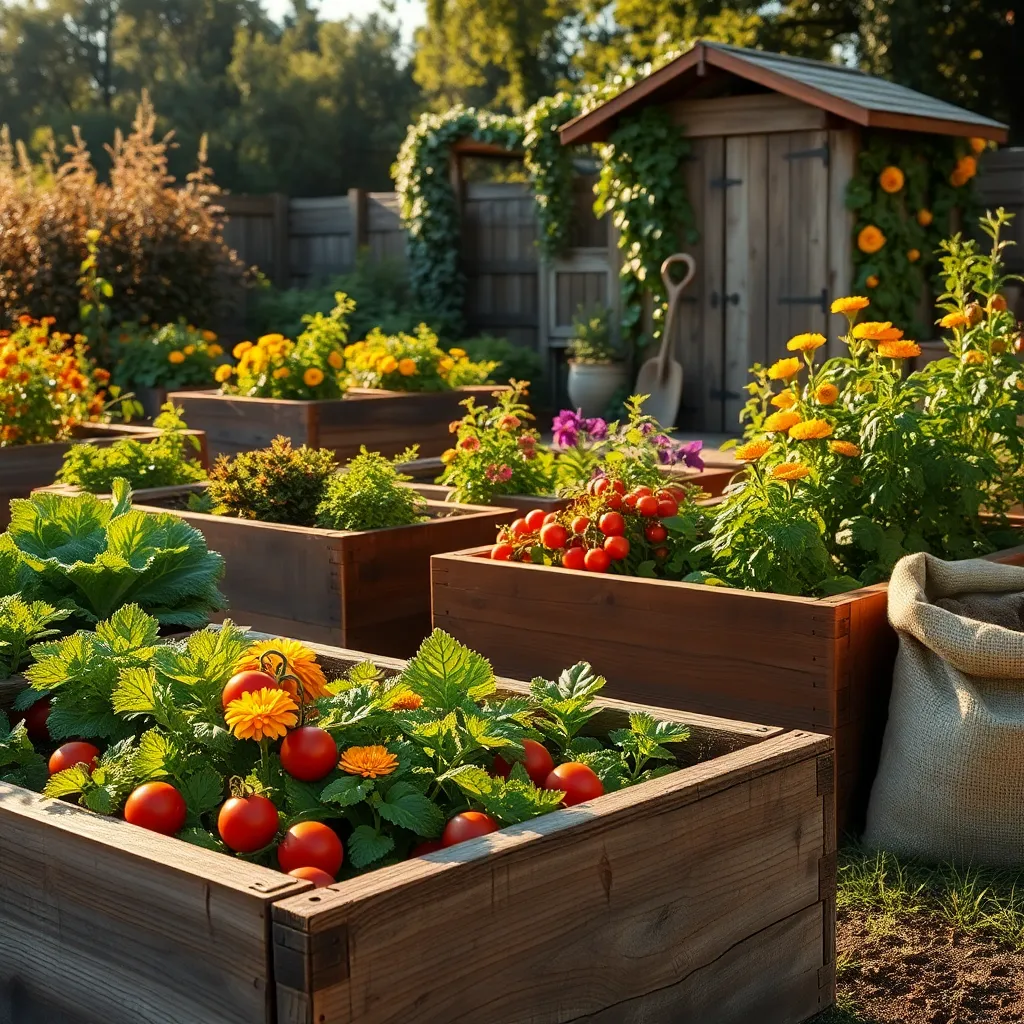
Raised beds offer a great way to manage soil quality and drainage, especially when using salvaged wood. Not only is this approach eco-friendly, but it also provides a cost-effective solution for gardeners looking to expand their planting areas.
Begin by selecting untreated wood, such as old pallets or barn wood, to avoid potential chemical contamination in your garden. Inspect the wood for rot and pests to ensure it will withstand the elements and support your plants effectively.
After gathering your materials, cut the wood to the desired length and assemble the boards into a box shape, securing them with weather-resistant screws. When positioning your raised bed, choose a location with at least six hours of sunlight per day to accommodate a wide variety of plants.
Fill the bed with a balanced soil mix, combining 60% topsoil, 30% compost, and 10% well-rotted manure to create a nutrient-rich environment. This blend supports healthy root development and provides the necessary nutrients for plant growth.
Watering is another crucial aspect; aim to keep the soil consistently moist but not waterlogged. Incorporating a drip irrigation system can help maintain optimal moisture levels while conserving water.
Swap Seeds with Fellow Gardeners
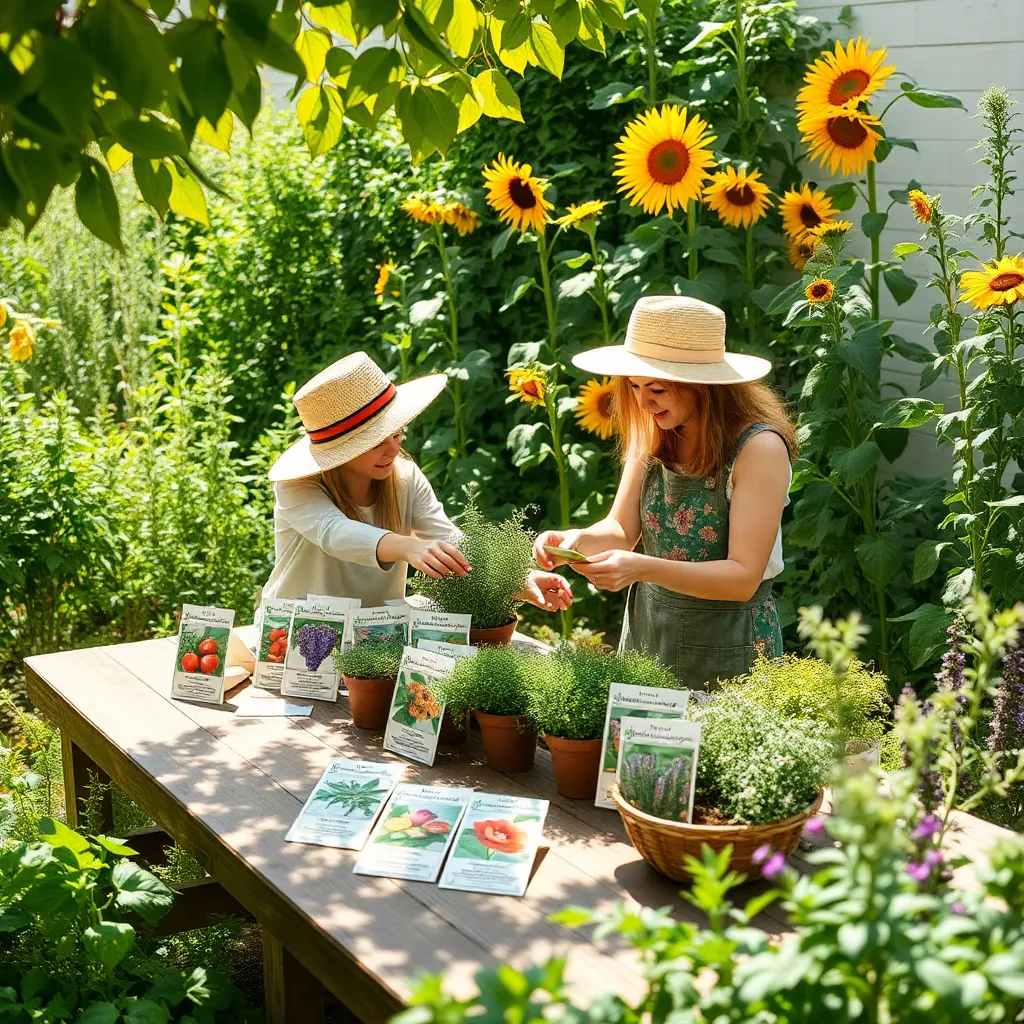
Swapping seeds with fellow gardeners is an excellent way to diversify your garden without spending a dime. By exchanging seeds, you can also share knowledge and experience with others, enriching your gardening adventure.
Start by organizing a seed swap event in your community, or join an online group dedicated to this purpose. Ensure that you save seeds from your healthiest plants, as this will increase the chance of successful germination and growth in your garden.
When swapping seeds, label each packet clearly with the plant’s name, variety, and any planting instructions. This will help both you and your swapping partner know the best conditions and timing for sowing the seeds.
Encourage diversity by swapping seeds of plants that thrive in different conditions. For instance, consider exchanging drought-tolerant seeds like lavender and succulents with those who have ample moisture-loving plants like basil and mint.
Conclusion: Growing Success with These Plants
As you embark on the journey of nurturing both your garden and your relationships, these 14 budget-friendly organic gardening tips serve as a guide to cultivate deeper connections and a thriving environment. From understanding the importance of communication through soil testing, to realizing the value of patience with companion planting, each tip reinforces key relationship concepts such as trust, support, and mutual growth. By embracing the art of composting, you learn to transform challenges into opportunities, while mulching teaches you the importance of protecting the foundations of your partnership.
Your actionable next step is to choose one tip that resonates most and apply it to your relationship today. Perhaps it’s by setting aside time to ‘water’ your relationship with quality moments or by ‘pruning’ away distractions to focus on each other.
Remember to bookmark this article as your go-to resource for nurturing both your garden and your relationships. As you continue to apply these principles, envision a future where your relationships flourish with the same vibrancy and resilience as a well-tended garden. With commitment and care, the seeds of your efforts will blossom into enduring relationship success.

